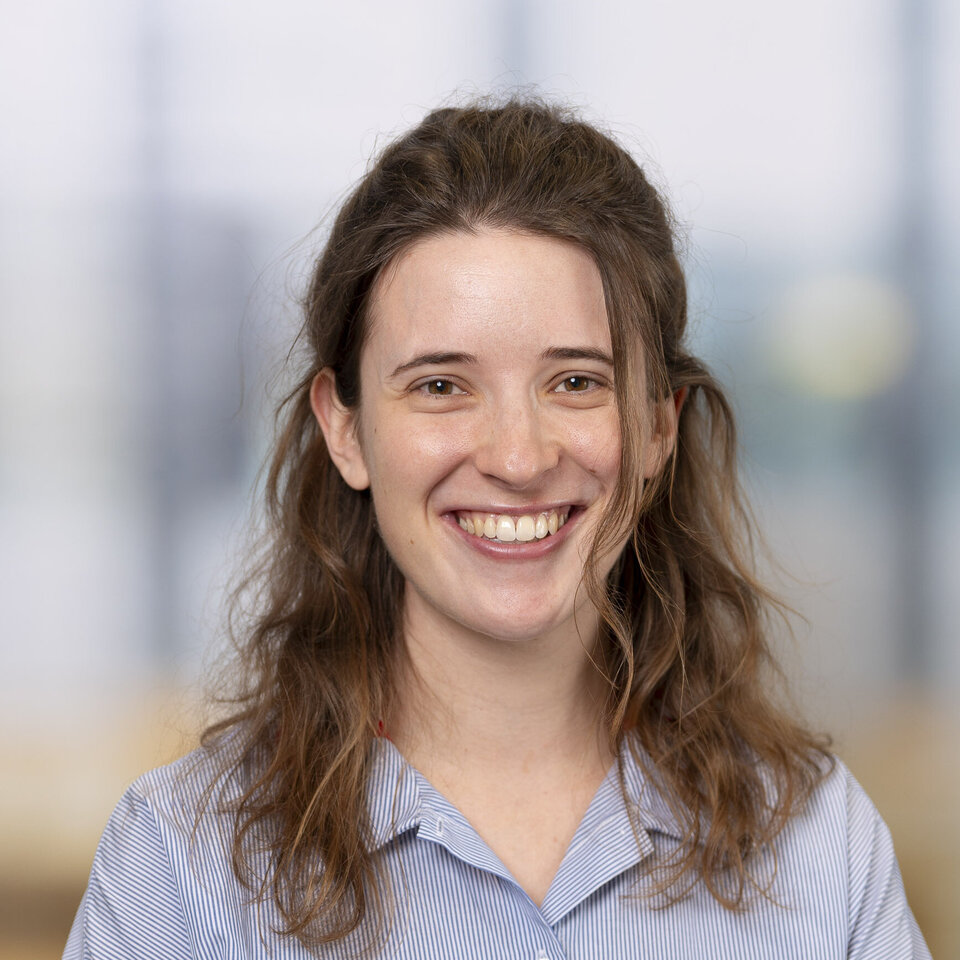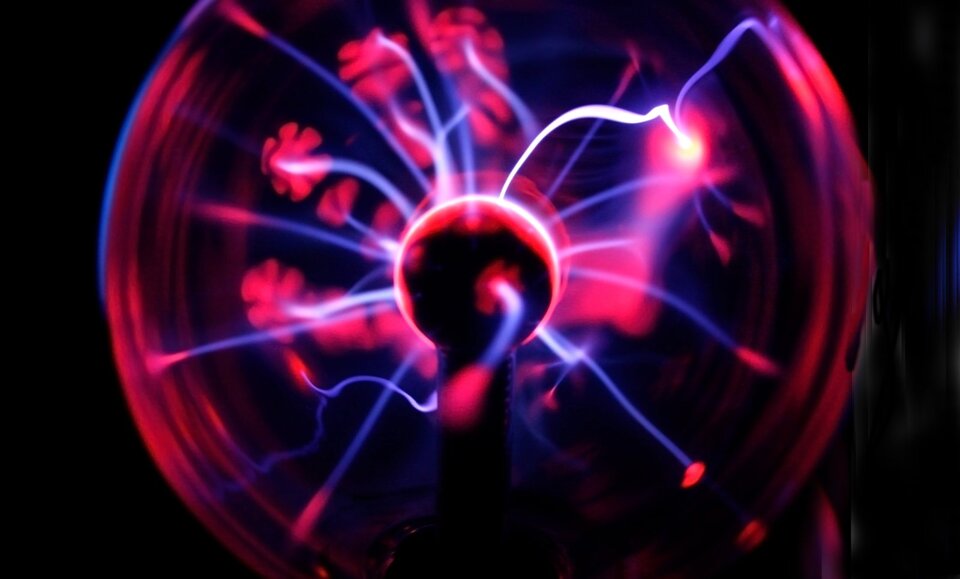Activeer hoog contrast
Ga naar hoofdcontent
News and Events
4TU Energy grant for Bijoy Bera for research (with UT) on Magneto-Iono-caloric Heat Pumps
Recently, dr. Bijoy Bera (Interfacial Physis Lab/Transport Phenomena Section) received, together with his collaborator dr. Keerthivasan Rajamani (University of Twente), the 4TU Energy grant, which promotes collaborative efforts among the four technical universities of NL to address the energy issues/future of this country. ChemE News sat down with Bijoy for more info. What is a heat pump? Why does NL need them? What’s wrong with the current heat pumps? A pump is a device where we put (electrical) energy to obtain work. Heat pump is where work (together with heat from a source) is supplied to a device to obtain heat, very useful for efficient heating of households. The heating demand for the built environment in the Netherlands alone is expected to be 333 PJ of energy in 2030. As of 2022, 82% of Dutch households still use natural gas for heating. (Traditional vapor compression system) Heat pumps are being increasingly used in Dutch households (if you ask me, not as much as should be), but the major problem is their efficiency, which tends to hover around 40%-50%. How is your research going to improve the situation? Dr. Rajamani (UT) and I are going to investigate, model and design a new type of heat-pump: Magneto-iono-caloric heat pumps. We plan to use magnetic ionic liquids where low strength magnetic field can be used to bring the melting point of a salt down to below the room temperature. The heat of solidification/crystallization of the salt can then subsequently be used as the heat source of the heat pump, which will lead to higher Carnot efficiency. What is the nature of the collaboration in this project? Keerthi (Dr Rajamani) is an expert in magneto-caloric devices where magnetic fields are applied to change the energy input/output of a system. I will bring my expertise of ionic manipulation of energy interactions in a system. Keerthi and I were chatting about our areas of interest about a year ago, and we realized that by combining these two points of interest, we can come up with something unique! Dr. Bijoy Bera Why is this research important? Will this grant be sufficient in that quest? There is right now a strong direction in the Dutch research landscape to contribute to new forms of energy and how to increase efficiency in processes producing these forms of energy. However, classic thermodynamic processes (such as a heat pump) are often overlooked. This grant is a small but timely incentive for us to start the work, and hopefully our results will inspire colleagues to join us and create a platform for something bigger. Sounds interesting! When can we buy magneto-iono-caloric heat pumps for our houses? Not for a little while, unfortunately! But we are talking about years not decades! And once we can make it, it will open many doors for us, not only for household heating, but for renewed faith in novel energy systems!
Understanding the learning process: machine learning and computational chemistry for hydrogenation
Machine learning is being mentioned all around, but can it be applied to modelling homogeneous catalysis? Researchers from TU Delft together with Janssen Pharmaceuticals published an extensive study accompanied by one of the biggest datasets on rhodium-catalyzed hydrogenation in Chemical Science trying to answer this question. Adarsh Kalikadien Evgeny Pidko For more than half a century, Rhodium-based catalysts have been used to produce chiral molecules via the asymmetric hydrogenation of prochiral olefins. The importance of this transformation was acknowledged by a Nobel prize given to Noyori and Knowles for their contributions in this field. Nowadays, asymmetric hydrogenation catalysts are widely used in the pharmaceutical industry, numerous chiral ligands are available to tackle a wide range of prochiral substrates and the reaction mechanism has been extensively studied. Consequently, one would expect that finding the best catalyst for the asymmetric hydrogenation of a new substrate is a trivial task. Unfortunately, this is not the case and a tedious and costly experimental screening is still needed. Adarsh Kalikadien and Evgeny Pidko from TU Delft together with experts in high-throughput-experimentation, data science and computational chemistry from Janssen Pharmaceutica in Belgium decided to investigate whether a well-trained machine could do the job. To their surprise, the machine was actually not able to learn as much as they expected. The idea was to set up a simple model reaction with a well-known rhodium catalyst. Based on the experimental data generated by the high-throughput experimentation team of Janssen, a computational dataset was built to which multiple machine learning models were applied. “We digitalized the 192 catalyst structures and represented them with features of various levels of complexity for the machine learning models,” says Kalikadien, a PhD student in Pidko’s group. "The interesting thing was that all the simpler models, including the random model, showed similar performances as the expensive variant, which intrigued us. It turned out to be an early indication that the machine was not really learning anything useful.” "One of our conclusions was, when tested more extensively, that for an out-of-domain modeling approach, it doesn't matter what representation you put in”. Nevertheless, although the team was not able to build an accurate model, their study was worth publishing. The publication process went relatively smoothly. “Although the first journal we contacted rejected our submission as too specialized, the high-impact journal Chemical Science saw the value of this work. Not many researchers are interested in just seeing the R2 value of a model and then having no possibility to use it, they are probably interested in an in-depth analysis like ours. So we were able to submit our data, code and even interactive figures there for everyone to use.” At the moment there is a big incentive for publishing negative data in order to help the community to assess the true added value of machine learning, since models trained on mainly positive results tend to become very biased. "We made everything open source," says Kalikadien. "Not only is all the data accessible, but we also offer the code including packages and instructions, so that anyone who is interested can do the same type of research." In this way, they have published one of the largest datasets of a certain type of hydrogenation reaction. What's next? "Our representation of the catalyst wasn't as meaningful for the machine learning models as we had hoped, so we are now looking for a representation that may be less simplified but still as simple as possible," says Kalikadien. "Creating a digital representation of your catalyst should not cost way more money than running the actual experiment, so we are trying to incorporate more information from the reaction mechanism into the model without making it too extensive. A more dynamic and hopefully more informative version of the representation." Read the publication Adarsh Kalikadien, Cecile Valsecchi, Robbert van Putten, Tor Maes, Mikko Muuronen, Natalia Dyubankova, Laurent Lefort and Evgeny A. Pidko
Bipolar membranes for intrinsically stable and scalable CO2 electrolysis
The energy transition requires technology to supply sustainable carbon-based chemicals for hard-to-abate sectors such as long-distance transport and plastic manufacturing. These necessary hydrocarbon chemicals and fuels, responsible for 10-20% of the global greenhouse gas emissions, can be produced sustainably by the electrolysis of captured CO 2 using renewable electricity. Currently, the state-of-the-art CO 2 electrolyzers employ anion exchange membranes (AEMs) to facilitate the transport of hydroxide ions from the cathode to the anode. However, CO 2 is crossing the membrane as well, resulting in a loss of reactant and unfavourable anode conditions which necessitates the use of scarce anode materials. Bipolar membranes (BPMs) offer an alternative that addresses the problem of CO 2 crossover but still requires research to match the product selectivity of AEM-based systems. Our perspective, a collaboration between groups of David Vermaas, Tom Burdyny and Marc Koper, published in Nature Energy, assesses the potential of BPMs for CO 2 electrolysis by looking at CO 2 utilization, energy consumption, and strategies to improve the product selectivity. Abstract CO 2 electrolysis allows the sustainable production of carbon-based fuels and chemicals. However, state-of-the-art CO 2 electrolysers employing anion exchange membranes (AEMs) suffer from (bi)carbonate crossover, causing low CO 2 utilization and limiting anode choices to those based on precious metals. Here we argue that bipolar membranes (BPMs) could become the primary option for intrinsically stable and efficient CO 2 electrolysis without the use of scarce metals. Although both reverse- and forward-bias BPMs can inhibit CO 2 crossover, forward-bias BPMs fail to solve the rare-earth metals requirement at the anode. Unfortunately, reverse-bias BPM systems presently exhibit comparatively lower Faradaic efficiencies and higher cell voltages than AEM-based systems. We argue that these performance challenges can be overcome by focusing research on optimizing the catalyst, reaction microenvironment and alkali cation availability. Furthermore, BPMs can be improved by using thinner layers and a suitable water dissociation catalyst, thus alleviating core remaining challenges in CO 2 electrolysis to bring this technology to the industrial scale. Go to the publication Kostadin Petrov Christel Koopman David Vermaas Tom Burdyny Siddharta Subramanian
Bijoy Bera Educator of the Year in the BSc-MST and MSc-ChemE programmes
This year, Bijoy Bera – after a nomination by TG - was elected as Educator of the Year in the BSc-MST and MSc-ChemE programmes. At the same time he was also nominated by SV-Hooke as Educator of the Year in the Nanobiology programmes. Such a double nomination has never happened before. Although Bijoy Bera has been with TU Delft for only 4 years now, he has already become a vital teacher in the BSc-MST and MSc-ChemE programmes. Bijoy is described by students and colleagues as an incredibly dedicated, passionate, kind and sweet teacher teacher, who will go many extra miles to lead each individual student to understanding of the material. Bijoy often asks for feedback on the course during his lectures and processes it during the course itself. He tries to adapt and renew all his courses every year. In addition, he always answers questions quickly and is very accessible. If he realizes that a student is stressed, he always tries to reassure them. Also outside of class, and on topics that he doesn’t teach, students seek him out for explanations. This shows how very clear it is to the students that he cares and is approachable. In addition to all of this, Bijoy also supervises many BEP and MEP students and he puts a lot of effort into this. Many students describe him as the best teacher they have ever had. Students write: “Bijoy is always super clear.” “Bijoy teaches flawlessly.” “Bijoy did amazing, very structured.” “Bijoy always makes sure everyone is on the same page as him an completely understands what he is explaining.” “He is a really passionate, kind, sweet teacher. And he takes his student's wellbeing to heart.” “He is always prepared for the lectures and is always ready to help whenever students need it.” “Of all the teachers I have had, some stand out for their enthusiasm, willingness to help, clarity, and understanding of the fact that we are students with many courses. Bijoy Bera stands out for all of these reasons. If the class consensus is that we don't understand something, he is willing to alter his schedule to make sure we understand it first, instead of saying that we should just have understood by ourselves. Most importantly, Bijoy is fair, humble, kind, and fun.” “He connects with the students and is accessible.” With all this, it should be noted here that Bijoy teaches precisely the topics that students find very abstract and hard to grasp, like transport dynamics and process dynamics. So our hats off to his amazing didactical skills. Beyond developing and teaching his own courses, he also aids other teachers in developing their courses. For example when the Numerical Methods course was set up in a new format, using challenge-based learning, Bijoy was a vital to this development. Bijoy is a core of the TU Delft IDEE Retention team, in which he will co-supervisor a PhD student working on progression and retention of knowledge & skills. Bijoy with his team will explore how to enhance student’s progression and retention, using the bachelor Molecular Science and Technology as his `field lab’ and aims to translate the lessons learned to programs across TU Delft.
Bijoy Bera Educator of the Year in the BSc-MST and MSc-ChemE programmes
This year, Bijoy Bera – after a nomination by TG - was elected as Educator of the Year in the BSc-MST and MSc-ChemE programmes. At the same time he was also nominated by SV-Hooke as Educator of the Year in the Nanobiology programmes. Such a double nomination has never happened before. Although Bijoy Bera has been with TU Delft for only 4 years now, he has already become a vital teacher in the BSc-MST and MSc-ChemE programmes. Bijoy is described by students and colleagues as an incredibly dedicated, passionate, kind and sweet teacher teacher, who will go many extra miles to lead each individual student to understanding of the material. Bijoy often asks for feedback on the course during his lectures and processes it during the course itself. He tries to adapt and renew all his courses every year. In addition, he always answers questions quickly and is very accessible. If he realizes that a student is stressed, he always tries to reassure them. Also outside of class, and on topics that he doesn’t teach, students seek him out for explanations. This shows how very clear it is to the students that he cares and is approachable. In addition to all of this, Bijoy also supervises many BEP and MEP students and he puts a lot of effort into this. Many students describe him as the best teacher they have ever had. Students write: “Bijoy is always super clear.” “Bijoy teaches flawlessly.” “Bijoy did amazing, very structured.” “Bijoy always makes sure everyone is on the same page as him an completely understands what he is explaining.” “He is a really passionate, kind, sweet teacher. And he takes his student's wellbeing to heart.” “He is always prepared for the lectures and is always ready to help whenever students need it.” “Of all the teachers I have had, some stand out for their enthusiasm, willingness to help, clarity, and understanding of the fact that we are students with many courses. Bijoy Bera stands out for all of these reasons. If the class consensus is that we don't understand something, he is willing to alter his schedule to make sure we understand it first, instead of saying that we should just have understood by ourselves. Most importantly, Bijoy is fair, humble, kind, and fun.” “He connects with the students and is accessible.” With all this, it should be noted here that Bijoy teaches precisely the topics that students find very abstract and hard to grasp, like transport dynamics and process dynamics. So our hats off to his amazing didactical skills. Beyond developing and teaching his own courses, he also aids other teachers in developing their courses. For example when the Numerical Methods course was set up in a new format, using challenge-based learning, Bijoy was a vital to this development. Bijoy is a core of the TU Delft IDEE Retention team, in which he will co-supervisor a PhD student working on progression and retention of knowledge & skills. Bijoy with his team will explore how to enhance student’s progression and retention, using the bachelor Molecular Science and Technology as his `field lab’ and aims to translate the lessons learned to programs across TU Delft.
Dit onderdeel wordt voor u geblokkeerd omdat het cookies bevat. Wilt u deze content (en anderen) alsnog bekijken? Door hier op te klikken geeft u alsnog toestemming voor het plaatsen van cookies.





